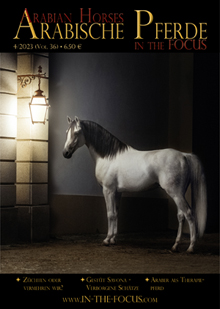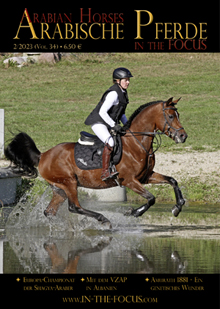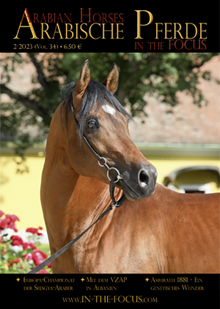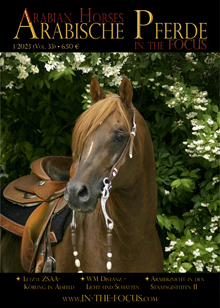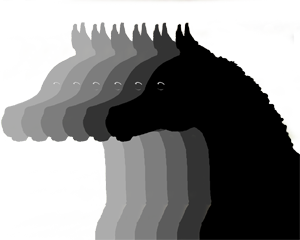 Just like everybody else, I receive a lot of advertisement – mostly electronically to my email inbox. And there, I read about an auction in neighbouring Belgium, where a mare was supposed to be auctioned who had in 5 years 18 foals by embryo transfer – all full siblings with one exception. Another mare had 14 foals in 6 years, again all from the same stallion with one exception. “Sucked out and thrown away” came to my mind…. The stallion in question had more than 400 foals in 7 years, the vast majority for one and the same breeder. But no, “breeder” is the wrong word – for me this is proliferation, because “breeding” means the well-considered mating of two individuals, not trial and error.
Just like everybody else, I receive a lot of advertisement – mostly electronically to my email inbox. And there, I read about an auction in neighbouring Belgium, where a mare was supposed to be auctioned who had in 5 years 18 foals by embryo transfer – all full siblings with one exception. Another mare had 14 foals in 6 years, again all from the same stallion with one exception. “Sucked out and thrown away” came to my mind…. The stallion in question had more than 400 foals in 7 years, the vast majority for one and the same breeder. But no, “breeder” is the wrong word – for me this is proliferation, because “breeding” means the well-considered mating of two individuals, not trial and error.
Involuntarily, one question comes to my mind: What is going to happen with all these foals? We know the market: Good prices are only paid for horses, that have really good results in the international show ring. But there, you don’t find these horses as often as they should be represented. Should there be some truth in the rumor that a big portion of the colts that don’t make it to Aachen, Paris or Scottsdale, are given away for free, sold (often) without papers to dealers, or simply “disappear”…?
To give away a foal cheaply or for free to a horse crazy girl may be – under the headline of animal protection – a good thing. Rather give it away for free, than take it to the slaughterhouse. But the effects to the market and to other breeders are detrimental: Where you can get a cute little foal with a famous pedigree for free or for little money, nobody will pay anything for a horse anymore – “stingy is good” is the new motto.
These excesses in breeding are ruining the image of the breed. If breeders have to give away their horses for free, because they cannot get “rid of them” otherwise, nobody will be prepared to pay at least the cost price of a horse. These excesses are also fatal for all the breeders who cannot afford – and do not want to – give away their foals for free. The consequence is simple: They will stop breeding. On top of all, such mass production reduces the genetic diversity of the breed itself, if one fifth of all foals of a country are by one and the same stallion. And even if this example is extreme, and happened somewhere in Europe, it has an effect on the rest of the European market, too, as these horses finally end up with us. We are living in a global world after all.
Fortunately, there are still some enthusiasts who – with a lot of commitment – breed on a smaller scale and have specialized on certain niches, far away from mass production, mainstream, fashion and fads. In a few years, such “niche horses” may be sought after. There are first indications, that “free of fashion lines” becomes a special distincion. They do still exist, the stallions that present an alternative: Beautiful, Arabian looking and with riding points, something for which the Arabian horse was famous for in past centuries. Some of these stallions are introducing themselves in our “Stallion Parade” – enjoy your read.
Gudrun Waiditschka
Jan 04 2017









